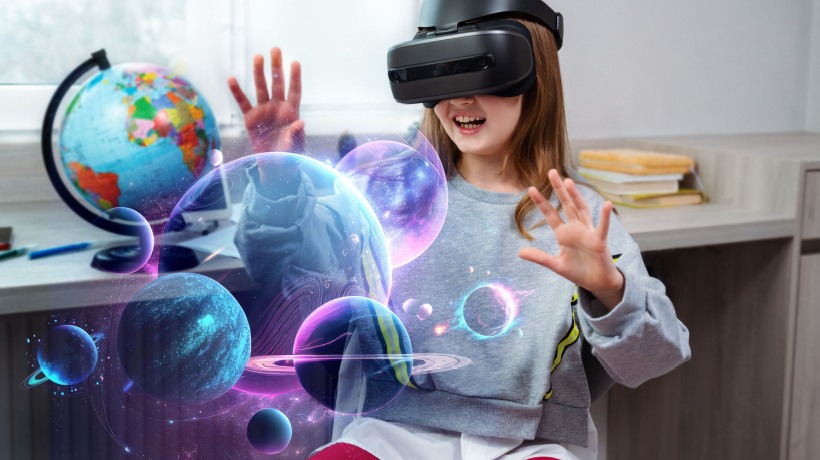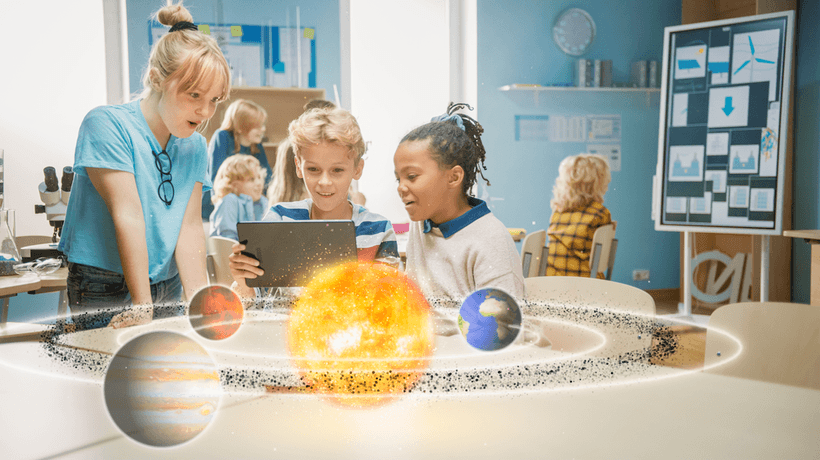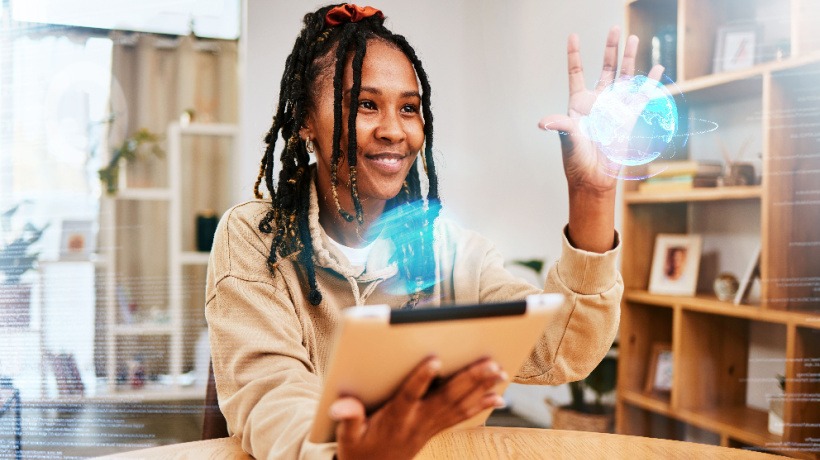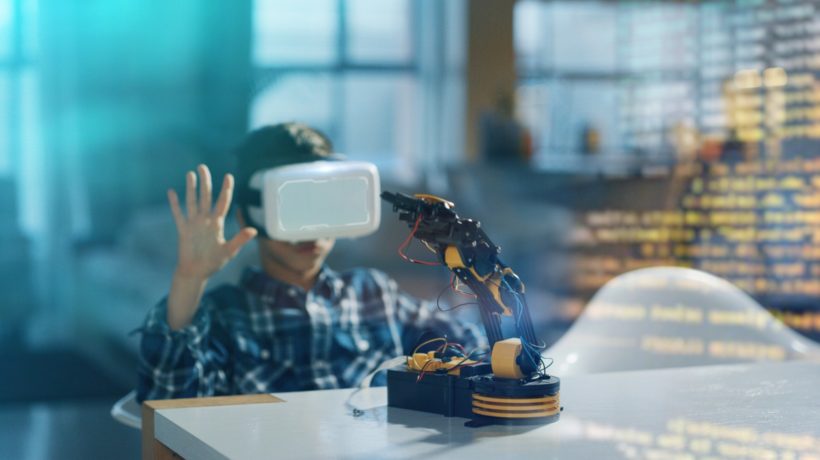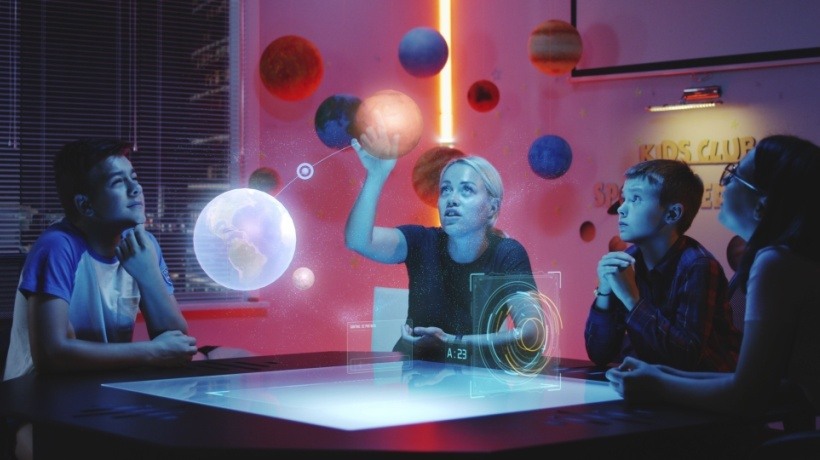Revolutionizing Learning Experience
In today's rapidly evolving technological landscape, Augmented Reality (AR) is emerging as a powerful tool that has the potential to transform the way children learn. By seamlessly blending the physical and digital worlds, AR creates interactive and immersive experiences that engage young minds in ways never before possible. In this article, we will explore how Augmented Reality is changing the face of education, making the learning process more interesting, engaging, and effective.
Augmented Reality: A New Dimension In Learning
Augmented Reality introduces a new dimension to traditional learning methods by overlaying digital content onto the real world. With the help of AR-enabled devices such as smartphones, tablets, or dedicated AR headsets, students can interact with virtual objects, explore simulations, and visualize complex concepts in a more intuitive and captivating manner.
Sparking Curiosity And Imagination
AR brings textbooks to life by transforming static images into dynamic and interactive elements. For example, a biology lesson on the human anatomy can become a captivating journey inside the human body, where students can explore organs and systems in a realistic and engaging way. This immersive experience sparks curiosity and ignites the imagination, making learning more enjoyable and memorable.
Real-World Applications
AR bridges the gap between classroom learning and real-world applications. Students can engage in virtual experiments, conduct simulations, and practice problem-solving in a safe and controlled environment. For instance, budding engineers can design and manipulate virtual structures, while aspiring scientists can perform virtual chemistry experiments, enhancing their practical skills and understanding of concepts.
Personalized Learning Experiences
AR enables personalized learning experiences tailored to each student's needs and learning style. By adapting content and difficulty levels, AR applications can provide targeted support and challenges, ensuring that every student can progress at their own pace. This individualized approach boosts engagement, motivation, and ultimately, academic performance.
Collaboration And Social Learning
AR promotes collaborative learning by facilitating shared experiences among students. Virtual group projects, interactive quizzes, and Augmented Reality games encourage teamwork, communication, and problem-solving skills. Through shared exploration and discussion, students can learn from each other, fostering a collaborative and supportive learning environment.
Enhancing Accessibility And Inclusivity
Augmented Reality has the potential to make education more accessible and inclusive. For students with special needs, AR can provide additional visual and auditory cues, making learning more comprehensible. AR can also accommodate various learning styles, catering to visual, auditory, and kinesthetic learners, ensuring that every student can actively participate and benefit from the educational content.
AR And Language Learning
AR opens up exciting possibilities for language learning. Through AR applications, students can engage in virtual conversations with characters, practice vocabulary and grammar in context, and even explore foreign cultures in a more immersive way. This interactive approach enhances language acquisition and fluency, making language learning more dynamic and enjoyable.
Measuring The Impact
Numerous studies and research indicate the positive impact of Augmented Reality on learning outcomes. According to a report by the World Economic Forum, students who utilize AR technologies perform better academically and show increased retention of information compared to traditional teaching methods. Additionally, research from Stanford University reveals that AR can enhance spatial understanding and boost problem-solving skills.
Expanding Global Learning Opportunities
Augmented Reality opens doors to global learning experiences, allowing students to virtually explore different cultures, landmarks, and historical sites from around the world. Through AR, students can take virtual field trips to ancient civilizations, visit renowned museums, and interact with experts and professionals from various fields. This global perspective fosters cultural understanding, broadens horizons, and encourages a sense of interconnectedness in an increasingly interconnected world.
Augmented Reality And Assessments
AR can revolutionize the way assessments are conducted. Traditional tests often rely on multiple-choice questions, which primarily assess rote memorization. With AR, assessments can become more interactive and practical, measuring students' ability to apply knowledge in real-life scenarios. For example, students can solve AR-based puzzles and complete virtual experiments, or demonstrate their understanding through creative projects. This shift in assessment methods promotes critical thinking, problem-solving, and creativity, better preparing students for the demands of the twenty-first-century workforce.
Conclusion
As we have explored throughout this article, Augmented Reality is redefining the landscape of education and transforming the way children learn. By leveraging AR's interactive and immersive capabilities, educators can captivate young minds, spark curiosity, and enhance learning outcomes. From personalized experiences and collaboration to accessibility and global learning opportunities, AR offers a plethora of benefits that pave the way for a more engaging, inclusive, and effective education system. As technology continues to advance, it is crucial for educators, policymakers, and stakeholders to embrace the potential of Augmented Reality and integrate it into educational practices, ensuring that future generations are equipped with the skills and knowledge needed to thrive in an ever-changing world.
